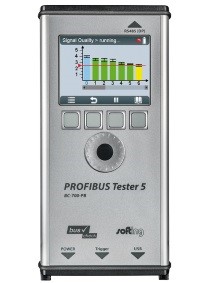 A significant number of end-users and manufacturers that run PROFIBUS networks have standardized on Softing’s reliable diagnostic toolset. One example is one of the largest retail store chains in the US. Recently, this retail chain has decided to upgrade its existing fleet of PROFIBUS testers to a newer version under a trade-up program offered by Softing.
A significant number of end-users and manufacturers that run PROFIBUS networks have standardized on Softing’s reliable diagnostic toolset. One example is one of the largest retail store chains in the US. Recently, this retail chain has decided to upgrade its existing fleet of PROFIBUS testers to a newer version under a trade-up program offered by Softing.
A significant portion of retailer’s revenue is generated by online orders through the retailer’s web site. The shipping and handling for online orders is executed by one of the retailer’s shipping facilities. The packaging of the goods into cardboard boxes is handled by a complex automated system with peripheral sensors and actuators that are networked over PROFIBUS to high-speed controllers.
Typically, PROFIBUS is a very robust communications protocol. However, the retailer’s experienced engineering team is aware that over time every network system will need maintenance work to avoid the occurrence of intermittent communication issues based on poor electrical signal quality levels. The retailer’s engineering team identified Softing’s PROFIBUS Tester as the best-in-class tool that more than satisfied their requirements.
PROFIBUS Tester
Currently, Softing offers several PROFIBUS Testers.
The PROFIBUS Tester 4 is an excellent PROFIBUS Diagnostic tool that requires an external power supply. The tester analyzes and evaluates the signal quality of each connected node as well as the data communication between the nodes.
The PROFIBUS Tester 5 includes all diagnostic features of the Tester 4. The Tester 5 is specifically designed for mobile operations. The test tool has an internal battery that will power the tester for up-to 7 hours of full operation without the need for an additional power supply.
In addition, the graphical color display presents the test results in a clear, easy-to-understand manner. In case a test result requires further explanation a user can consult the included context-sensitive help system for a comprehensive explanation of the observed test results.
Connect any of these two indispensable tools directly to the network and immediately start diagnosing the network. In stand-alone mode, the test results are stored within the tester and can be uploaded at a later time to a computer for further analysis or to generate a full test report.
